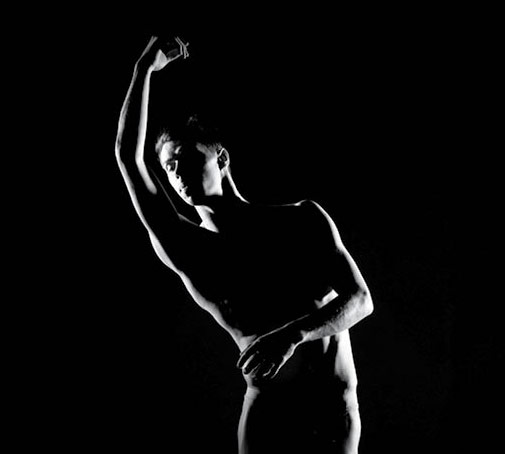For years, I’ve thought a lot about emotional fitness and how to come into a healthy relationship with my emotions, something that I did not learn from my family of origin. And it was through my riding horses and later my apprenticeship in equine-assisted learning (EAL) that I began to understand the importance of emotions and how we process them. In my EAL work, I was introduced to the work of Karla McLaren, author, researcher, and empathy expert, and her award-winning work in the field of emotional fitness.
McLaren emphasizes the importance of viewing emotions as information, staying away from labeling them as negative, and learning to dialogue with emotions to gather the valuable information that they carry for us. In other words, emotions inform and can also be a source of healing. To come into a proper relationship with our emotions, McLaren has developed an “emotional vocabulary” along with the types of questions that we must ask of each emotion to dig into the messages they have for us. This requires, in turn, a refinement of how we normally identify emotions. For example, it is very helpful to learn to discern between anger and frustration or fear and vulnerability. While these may sort of “feel” the same, connecting with these emotions in our body and asking the right questions will help us to sort things out more accurately. Below is an example of how one might work with discerning fear from vulnerability. This is an excerpt from an “emotional message chart”
I often use in my coaching work:
The idea here is that fear comes from an external threat, which begs the basic question of “how do I move into a position of safety”? An example of this can be someone exposed to an environment of physical or emotional abuse, whether at home or in the workplace. In contrast, and although it can feel like fear, vulnerability comes from an internal threat to our beliefs, value systems, and conditioned ways of relating to self and to the world. An example of this might be the shifts that could come during a person’s mid-life, when we might begin to think more about purpose and meaning, and perhaps question if the relationships and life we have built are serving us. These questions can be unsettling and bring up “fears”, but it is a vulnerability that arises from within. As such, it requires a different set of questions, such as identifying what is being challenged, and what disruptions and opportunities might come about if we accept a new direction.
Of course, the idea behind all the emotions is that they are neither positive nor negative -they are just powerful allies trying to tell us something. If we ignore our emotions and do not seek resolution and integration, they tend to escalate and intensify. Emotions are like babies; they will cry until you pick them up and take care of them. You can check out Karla’s work on her website:
There’s excellent work being done in the field of emotional fitness, especially in the professional and leadership fields. Someone who comes to mind is Carol Ross, founder of Emotionally Fit Leadership (emotionalfitleadership.com), who left a successful career as an engineer in the fields of nuclear power and telecommunications due to burnout. She eventually became a leadership coach after her own journey to become an emotionally fit individual. To quote Ross on what she identifies as her humbling journey into her emotional world, “I started to place importance on how I felt. Not just the good emotions, like thrill and hope, but also the ones typically labeled as negative-anger, despair, hurt, loneliness, even hatred. The range of emotions I allowed myself to feel determined my resilience to life’s challenges. I discovered a profound truth: emotions are my birthright”.
Emotional fitness work is essential in the path toward self-knowledge; to become proficient in the language of emotions and to dialogue with them, no matter how uncomfortable it may feel, is very important. And because the physical body is where emotion is stored and processed, emotional fitness tools ideally include embodied practices that strengthen our mind-body connection. This is not to suggest that the logical/rational brain is set aside; on the contrary, the idea is that emotions inform our intellect and that an alliance of the two makes for better decision-making and greater states of clarity. However, later in my coaching work and in my own personal journey, I became increasingly interested in emotional triggers -those interactions with another person or situations that can spark a negative emotional response. According to HealthLine.org, “An emotional trigger is anything — including memories, experiences, or events — that sparks an intense emotional reaction, regardless of your current mood.”
Almost all of us have triggers, which can range from experiencing a surge of emotions to even symptoms of anxiety. Working with emotions when we are triggered is an excellent skill for self-development.
For example, in the moment we can practice mindful breathing, scan our bodies to identify areas of discomfort, and then dig into those areas of tension for information -can we identify what we’re feeling, and is there any information that we can get from our bodies? Our body will speak to us when we engage with it in heart-felt inquiry. Tapping is another excellent way to engage the body when we need to self-regulate during an intense emotional response. Beyond self-regulation and improving our emotional vocabulary, there is a deeper inquiry involved in understanding the Source of our triggers, which generally are not isolated instances but rather patterns of response. Most of the time we’re not conscious of the pattern, until we begin the arduous and magical journey into shadow work.
We owe the concept of the shadow to the work of Carl G. Jung (1875-1961), the Swiss psychiatrist and psychoanalyst who founded analytical psychology. Although a complex concept, we can think of the shadow as an unconscious aspect of the personality that does not live up to the ego ideal of who we are. This usually leads to the ego rejecting these “unwanted” dimensions of the self, and rather than accepting and integrating them, they are project onto others. The shadow is like the blind spot of the psyche, and the process of individuating (or become whole) requires the awareness of these blind spots and the inner work of integrating them into the ego. Another way to put it is to take what is unconscious and bring it into consciousness….out of hiding in the closet of the repressed parts of ourselves and into the space where we can create a union of opposites. One example of shadow projection is when we get triggered by what someone may say or behave; you know, the stuff that just pokes the bear in us and we feel that surge of emotion that is almost irrational. Then we tend to go into judgment, “Oh, that person is so this and that.” Maybe our response is a rejection of the mirror that the person presents -we ourselves are “so this and that”, but because we cannot recognize it, we judge “the other”. It is always easier to point the finger outward than inward.
Therefore, there is a space of possibility beyond emotional fitness…the place where our shadows dwell, deep in our psyche. When we undertake the rigorous work of withdrawing our shadow (i.e., to stop projecting it) and rather integrating or owning it, it frees the soul and exposes our full potential. This is not a journey of becoming perfect or of “cleansing our sins”, it is rather a journey of integrating the various aspects of self into the whole that we are. Shadow work is an amazing process of “adulting”, through which we become fully accountable. In shadow work, we wake up to the soul’s yearnings, become intimate with its desires, and develop a good dose of self-love. Once that self-compassion awakens, we can more easily feel it toward others.
I like to think of emotional fitness as a valuable first layer to uncover in the process of self-knowing. It gets us to feel our feelings, to value them as allies, to become more supple, and to make more informed decisions that integrate the heart and the intellect. The tools we learn in our emotional fitness journey are very helpful when we enter the realm of the shadow. The language of the unconscious is highly symbolic and infused with feeling; it is a different dimension that requires we feel safe in navigating our emotional landscape. Emotional fitness and shadow work is a yin-yang process, the challenging dance of opposites coming into harmony with each other, grounded in self-love, forever evolving toward union with Source.







